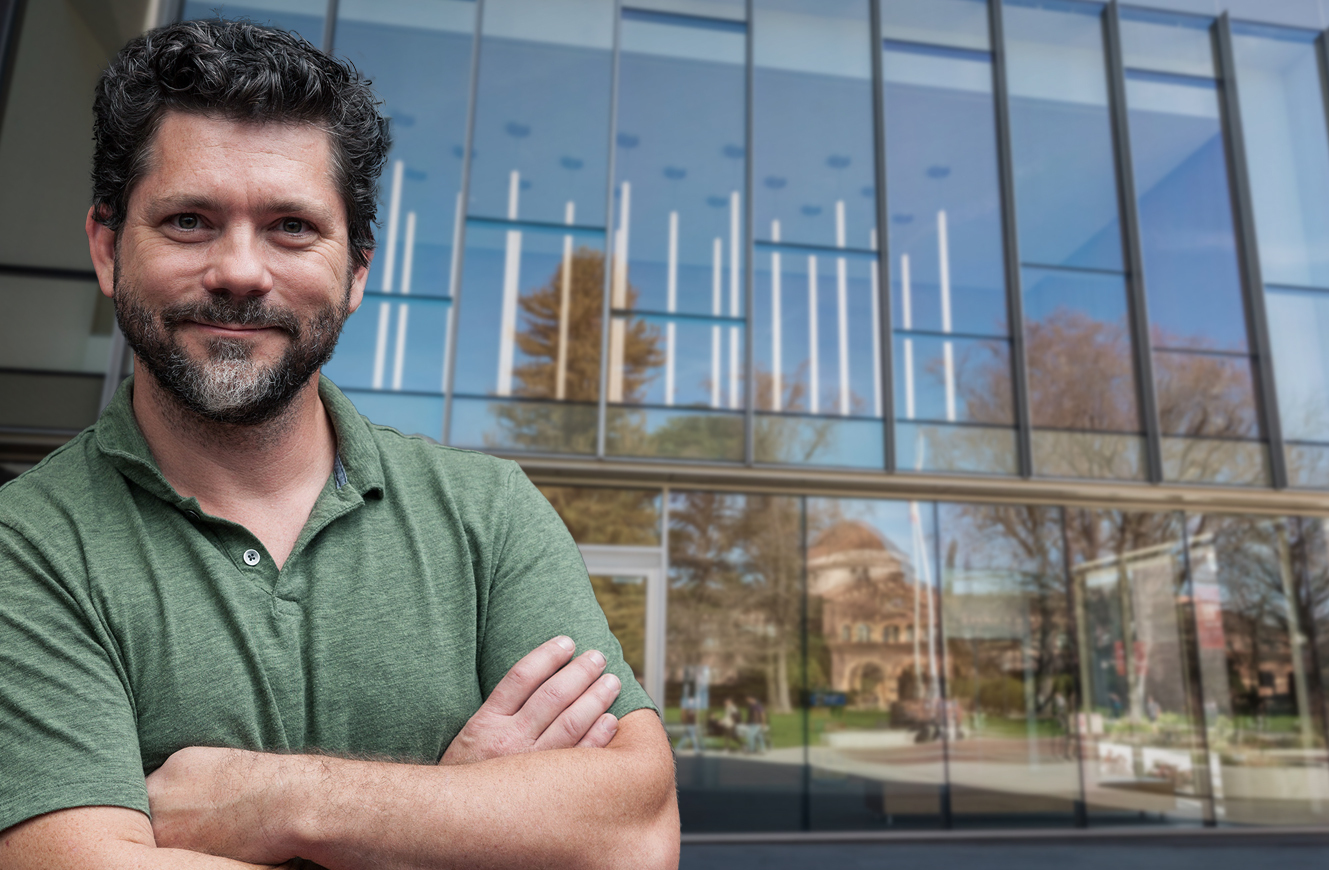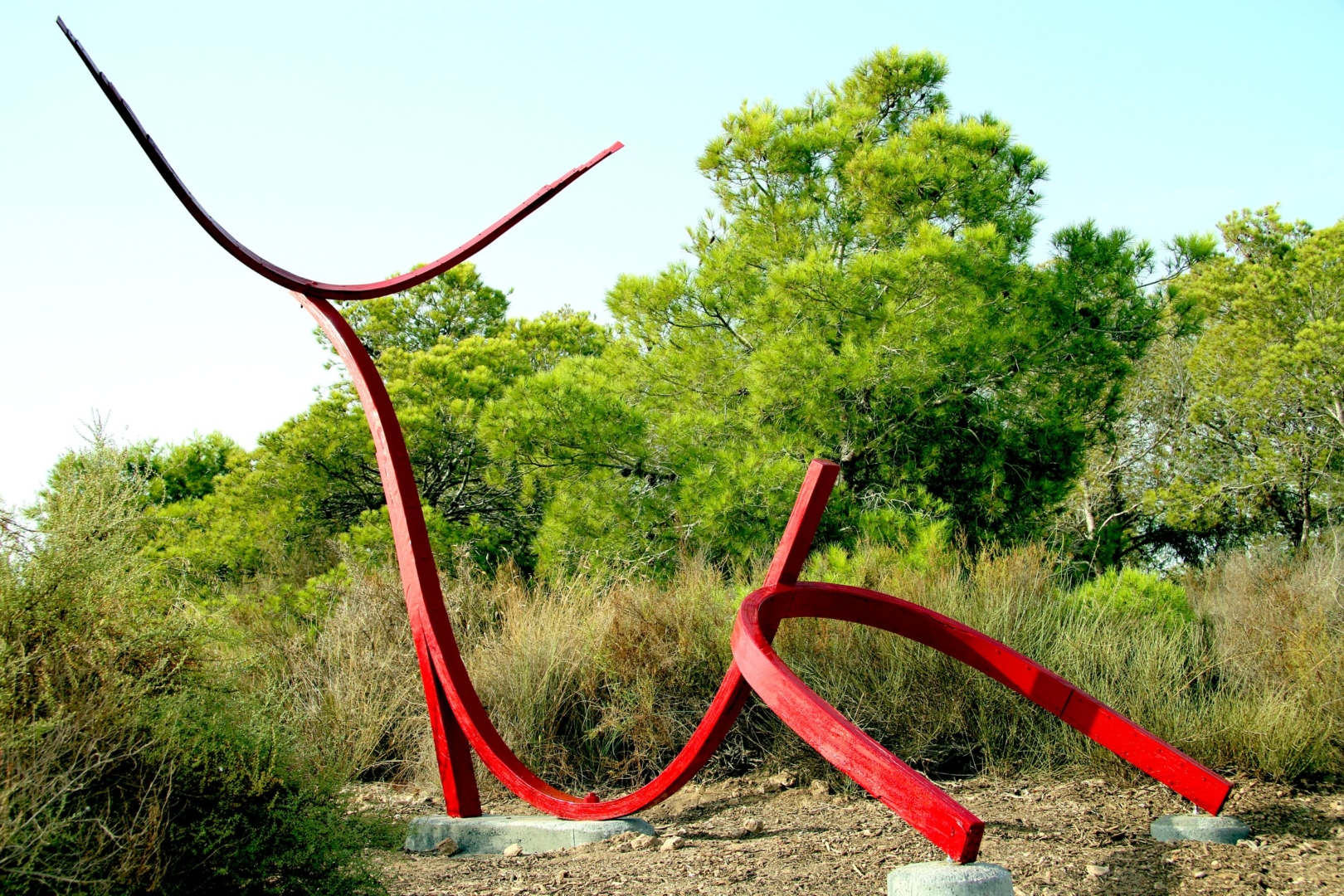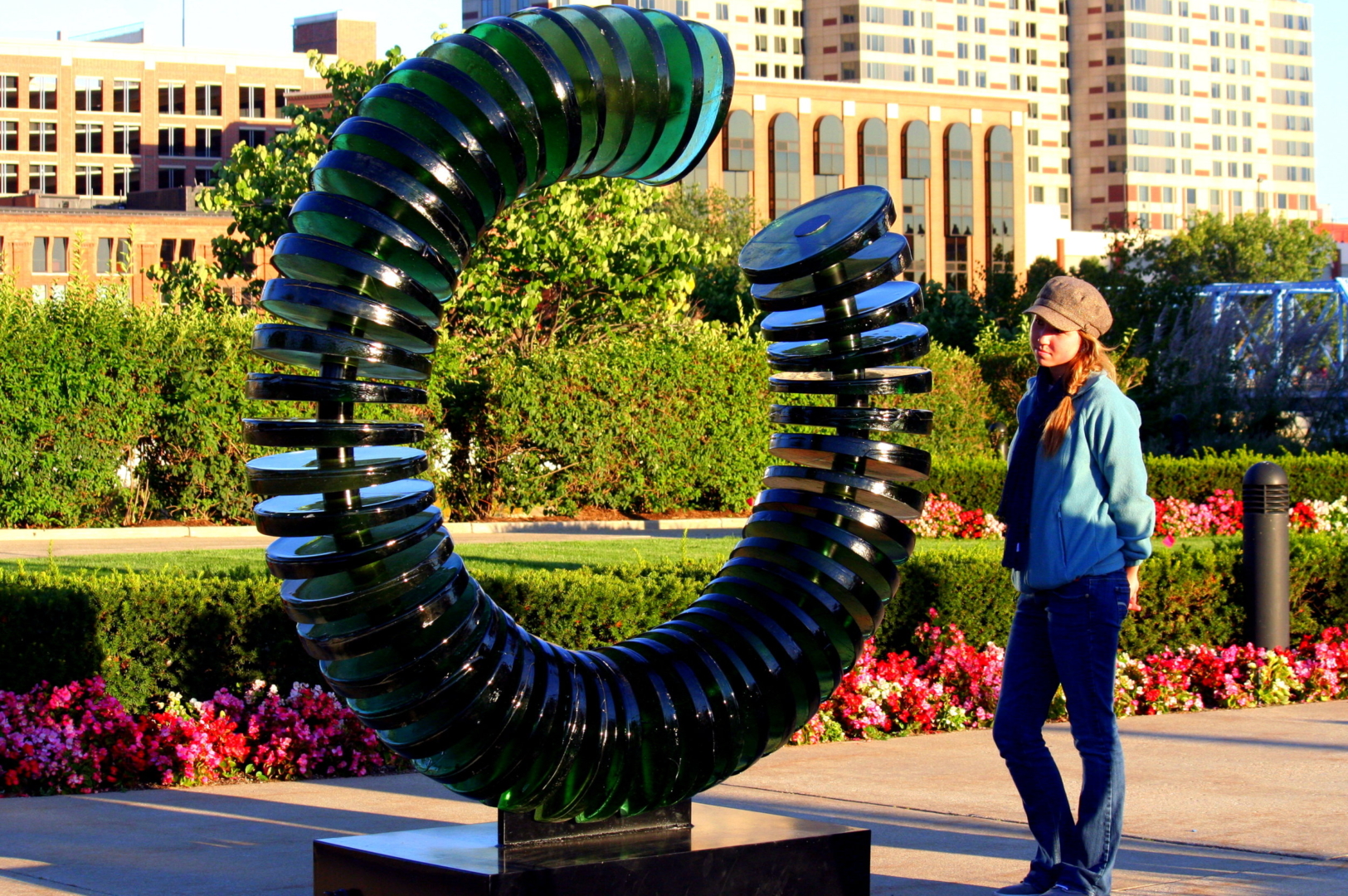New Art Teacher Brings Professional and Personal Success to Chico State

Steven Durow was a fifth-grader the first time a piece of art shook his world.
Squeezed into a chair designed for 8- and 9-year-olds, a teacher showed laminated images of famous art pieces to the class sitting at his feet on the floor, discussing each piece, its artist, and techniques used to produce the work.
“The teacher then held up Van Gogh’s ‘Starry Night’—I was awestruck and thought, ‘that’s what I want to do when I grow up,’” Durow recalled.
Admitting he’s still blown away by the painting decades later, Durow finds it difficult to articulate how and why the piece touched him then and why it continues to resonate with him today.
“There’s so much going on in just one square inch of that piece. Van Gogh has one brushstroke with six colors in it—you can see them—and I have no idea how he did that. Whether you zoom out or zoom in, there’s just so much going on,” he said. “It took me years and years and years to see ‘Starry Night’ in person—and I still respond to it the same way. In terms of explaining why that is? I still can’t.”

Durow will bring that wonder to Chico State this fall, along with a wealth of arts knowledge and expert analysis, as he begins teaching courses including glassblowing in the Department of Art and Art History. Having spent the last nine years as associate professor of art at Salisbury University in Maryland, Durow said the idea of teaching in California was extremely appealing to him—both for the natural beauty of the University’s setting and its Arts and Humanities Building.
“Chico State has a new glassblowing facility, and that is really fantastic,” he said. “That shows me the University is invested in the glass program and art program as a whole, which is really important to me.”
Durow is an accomplished artist in his own right. From exterior and interior works to architectural creations, his work has been part of six solo exhibitions, he has more than 50 selected exhibitions and commissioned art installations to his credit nationwide, and he has appeared in nearly 30 publications since 1998.
After graduating from Anderson University in 1998, he earned his Master’s of Fine Arts degree from Tulane University, where he specialized in large-scale sculpture. His works range from mixing-bowl size pieces and dozens of individual pieces as part of larger indoor exhibits to a 300-foot-long installation on a beach in Key West, Florida. And though his specialty is glass, he incorporates other materials into his exhibits, such as metals and clay. Durow said his approach to working with varied materials aligns with the relationship the viewer has with his art pieces.
“The abstract nature of my work is the result of this necessary back-and-forth with diverse and disparate materials, and paring down a complex and personal narrative into a form that can be embraced by a wide audience,” he said. “I want the work I create to be a conversation with the viewer in the same way that creating the work is a dialog with the material.”
College of Humanities and Fine Arts Dean Tracy Butts said that replacing longtime and recently retired glass faculty Robert Herhusky was more than about fulfilling a need. It was embracing an incredible opportunity.

“College is about exploration, about discovering who you are, what interests you, what enriches you, what sparks your passion, what makes you happy,” Butts said. “We were looking for someone who could innovate curriculum, grow the program, and contribute to our collegewide efforts to raise the profile of the arts and humanities on our campus and beyond—and I’m confident we found that individual in Steven.”
As an undergraduate art student, Durow was driven by curiosity and experimentation and benefited from encouragement and mentorship from his faculty. Those same values guide him as he approaches teaching his own students, no matter what material they are working with, along with a rigorous and exploratory curriculum.
“At the beginning level, students learn fundamental skills—how to operate the tools and materials safely, how to manipulate them with control. At the intermediate level, I teach a wide variety of technique-based assignments, because I want students to be able to follow what they connected with,” he said. “At the upper-level classes, it essentially becomes independent study and I’m teaching 15 independent studies at that point, because everybody has their own thing they want to do.”
Having his work displayed in exhibits and magazines all around the country for more than 20 years—including making the cover of Sculpture magazine or becoming a household name—Durow said the days of those kinds of lofty goals are behind him as he embraces a more balanced approach to his work.
“As I matured, I’ve come to realize that being present in the moment and being able to live a creative life is what sustains a long career in the arts,” he said. “Teaching is an important part of my creative life as well—being able to inspire and motivate the next generation of artists is a profound responsibility and the best legacy I could hope for.”


